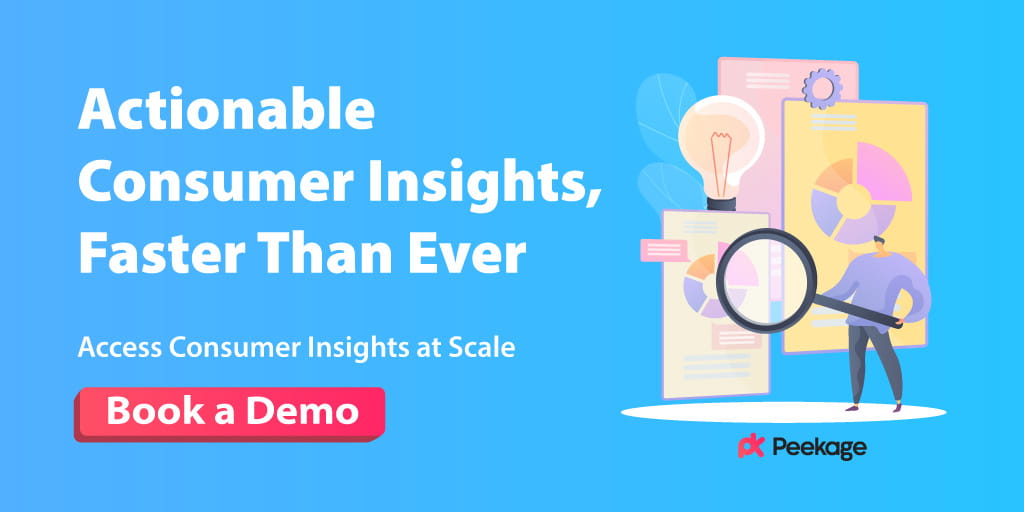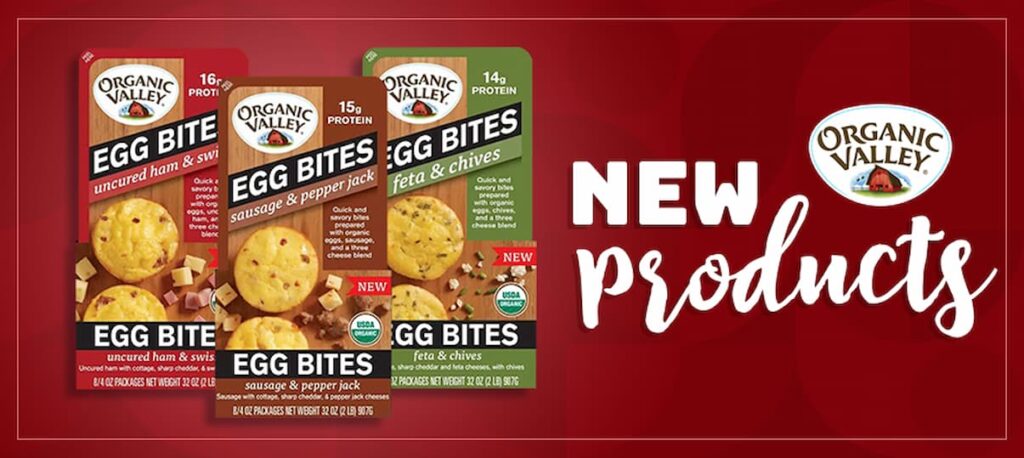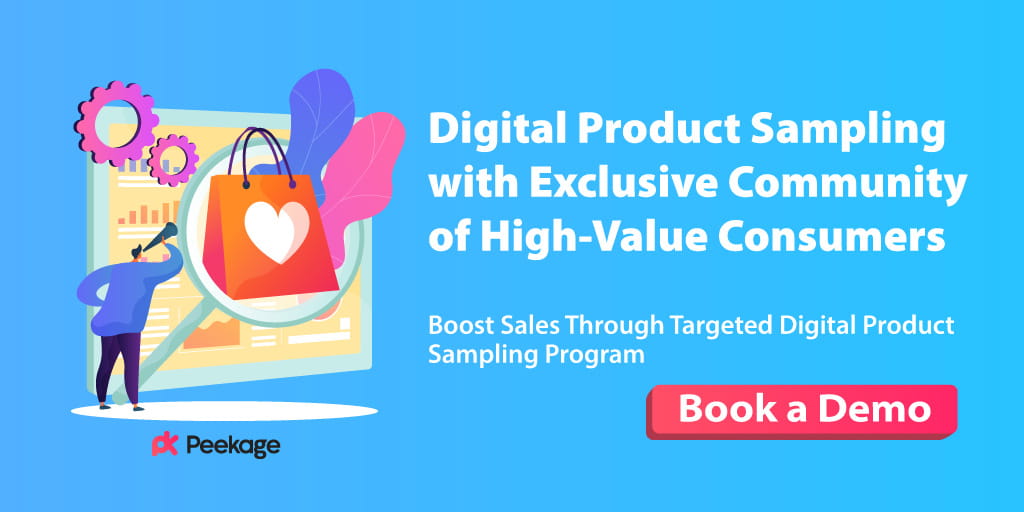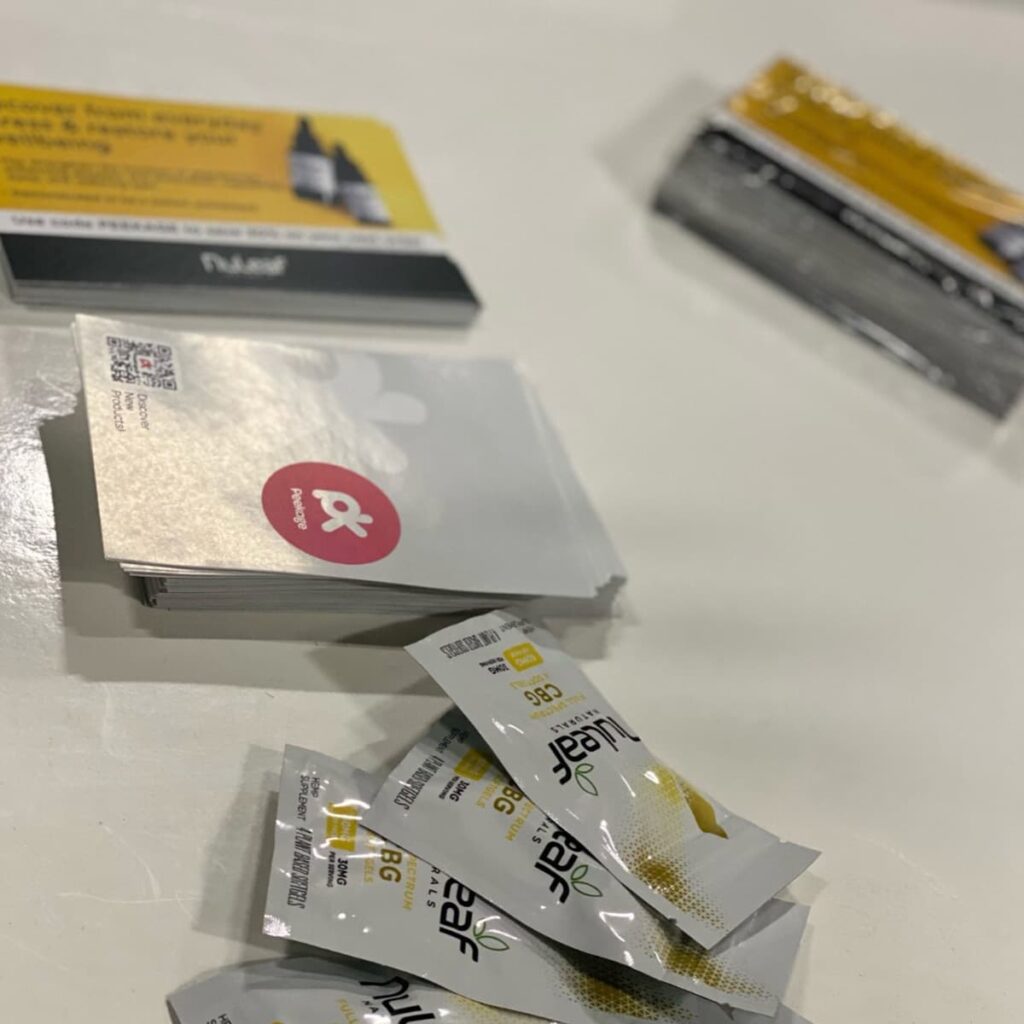In today's crowded and competitive marketplace, businesses can no longer rely on guesswork to develop products, services, and experiences that truly resonate with customers. All too often, companies operate based on assumptions rather than a deep, empathetic understanding of their audiences' behaviors, motivations, and unmet needs.
The consequences of this disconnect between companies and their customers are substantial. Even established brands frequently suffer significant financial losses, amounting to billions annually, due to poorly conceived offerings, marketing campaigns that lack resonance, and customer experiences that fail to meet expectations.
However, gaining a profound understanding of customers' mindsets presents an opportunity to forecast their needs before they are explicitly articulated. This level of consumer insight is not merely advantageous but imperative for driving sustainable growth and maintaining a competitive edge.
Consumer insights provide invaluable guidance for brands seeking to connect with their target demographic effectively. With the rise of versatile product testing platforms like Peekage, unlocking these insights has become more accessible than ever.
This guide explores proven best practices for generating, operationalizing, and activating meaningful consumer insights to shape everything from product strategy and marketing to customer experiences and business models. It's a roadmap for any company looking to get closer than ever to the audiences they serve.
What Are Consumer Insights?
Consumer insights are profound understandings of consumer behaviors, motivations, and preferences derived from analyzing data gathered through various research strategies. These insights delve beyond surface-level observations, offering brands a glimpse into the minds of their audience.
Think about the last time you purchased something solely because of an advertisement. Chances are, that decision was influenced by consumer insights that the brand had gathered about you or others like you. Smart companies realize that simply pushing products is no longer enough in today's crowded marketplace. They need to truly understand their customers.

What Are Types of Consumer Insights?
Consumer insights are very useful for businesses to understand their target audience's needs, preferences, and behaviors. These insights can be obtained from various sources, including:
- Market research: Structured studies conducted through surveys, focus groups, or interviews to gather data on consumer opinions, preferences, and behaviors.
- Online reviews: Feedback and ratings left by customers on e-commerce platforms, review sites, or social media, providing insights into product/service satisfaction and pain points.
- Purchasing data: Transactional information, such as sales figures, product preferences, and buying patterns, offering insights into consumer demand and purchasing behaviors.
- Website analytics: Data on website traffic, user behavior, and engagement metrics, helping understand consumer interests and online interactions.
- Social media data: Insights derived from consumer conversations, mentions, and sentiments expressed on social media platforms, reflecting their opinions and trends.
- Consumer sentiment: Analysis of consumer emotions, attitudes, and feelings towards a brand, product, or service, often obtained through text analysis or surveys.
- Customer service data: Feedback, complaints, and inquiries received through customer support channels, highlighting areas for improvement and common pain points.
- Competitor data: Information on competitors' products, pricing, marketing strategies, and customer feedback, providing a comparative understanding of consumer preferences.
By leveraging these diverse sources of information, businesses can gather comprehensive insights into their target consumers, enabling them to make data-driven decisions and enhance their products, services, and overall customer experience.
Consumer Insights Example

Organic Valley, a food and beverage brand, leveraged consumer insights to develop a new breakfast product called Egg Bites. Through consumer research conducted by Attest, they were able to identify the top three flavor preferences for their Egg Bites. However, they also gained an unexpected insight: consumers' preferences were influenced not only by the flavor but also by the product naming.
For instance, consumers preferred the name "Spicy Tomato Salsa Egg Bites" over "Mexican Egg Bites with Rancheros Salsa," as the former reminded them of the popular Mexican dish huevos rancheros. Similarly, they favored "New York Pizza Egg Bites" over "Pizza Egg Bites."
By utilizing consumer insights early in the product development process, Organic Valley could make informed decisions, saving them significant time and resources compared to making changes later in the process. These insights helped them refine their product offerings and messaging, ultimately leading to a successful launch of their Egg Bites range.
Why Consumer Insights Matter
Having a deep understanding of your customers allows you to make better, more informed decisions about product development, marketing campaigns, and overall business strategy. It helps you create products customers actually want.
According to a CB Insights report, a shocking 42% of startup failures are due to creating products no one wants. With robust consumer insights, you can validate ideas before investing time and money. Generally, the consumer insights’ benefits are:
Tailor your marketing efforts:
Instead of throwing spaghetti at the wall, consumer insights enable precision targeting to speak directly to your audience's pain points and aspirations. A Gallup study found that businesses leading in insights outperform their competitors by 85% in sales growth.
Deliver superior customer experiences:
Insights allow you to anticipate needs, eliminate friction points, and create delightful end-to-end experiences that foster loyalty. According to a study by McKinsey, companies that leverage data-driven insights are 23 times more likely to acquire customers, 6 times more likely to retain customers, and 19 times more likely to be profitable than companies that don't.
Stay ahead of industry shifts:
By continuously gathering consumer feedback, you can proactively identify emerging trends before competitors and pivot accordingly. Just look at how consumer preferences for healthier snacks reshaped the entire food industry:
“A few years ago, I helped a major apparel brand gather insights for a new product line of activewear designed for curvier body types. Through focus groups and ethnographic research, we discovered that existing options didn't adequately address things like:
- Proper support and compression in high-impact areas
- Breathable, moisture-wicking fabrics that didn't show sweat patches
- Flexible but flattering waistbands and hems
Leveraging these consumer pain points, the brand crafted a product line that quickly became a bestseller. It's a prime example of how understanding consumer needs leads to product success.
Generating Powerful Consumer Insights
So how do you actually go about generating meaningful consumer insights? It requires a mix of quantitative and qualitative methods:
A) Listen to the Voice of the Customer
This means analyzing all the direct feedback you're already getting through sources like:
- Social media comments and reviews: These offer a goldmine of unfiltered opinions about your products and brand perceptions.
- Customer service transcripts and surveys: Pay close attention to common complaints, suggestions, or points of confusion.
- Online Communities: Whether it's your own forum or Reddit threads, see what customers are saying peer-to-peer.
B) Conduct Dedicated Research
While the voice of customer data is crucial, you'll want to dig deeper through dedicated studies like:
- Focus groups: Moderated discussions allow you to explore topics in-depth and see those "ah-ha!" moments of realization.
- In-depth interviews: One-on-one conversations help uncover unconscious motivations and aspirations people can't always articulate in a group setting.
- Ethnographies: Observing people in their natural environments sheds light on unarticulated needs and use cases you may have missed.
- Quantitative surveys: Structured questionnaires allow you to validate hypotheses and quantify insights across a broader population segment.
C) Leverage New Technologies
Innovative tools like Peekage are helping brands uncover insights more rapidly and cost-effectively than ever before. Through in-home product sampling (IHUT) and tailored feedback loops, companies can:
- Get real-world data on consumer usage and experience
- Validate ideas and iterate before full product launches
- Run focused concept tests and conjoint analyses
- Conduct affordable nationwide or even global studies
- Putting consumer insights into action
Once you've gathered rich customer understanding, the hard part is translating those insights into concrete actions. Here are a few tips:
1) Develop Buyer Personas
Synthesize all your research into vivid personas that represent your core customer segments. Go beyond just demographics to capture their attitudes, goals, challenges, and purchase influences. These will serve as a "True North" for keeping your brand customer-obsessed.
2) Map the Entire Customer Journey
How do customers go about researching, evaluating, purchasing, and getting service for products like yours? An experience map visualizes every touchpoint to identify areas of friction or delight. You can then redesign experiences from the customer's perspective.
3) Align Your Organization
Don't let insights get siloed. Set up ways to share discoveries across different departments so that product development, marketing, sales, customer success, and others can all use customer feedback effectively.
4) Build Agility into Your Processes
Consumer needs are always evolving, so make insights an ongoing process. Implement feedback loops, run iterative tests, and establish efficient methods for rapidly developing, prototyping, and validating new ideas.
5) Measure the Right Success Metrics
Focus on more than just sales or conversions; also track leading indicators such as net promoter scores, customer effort scores, or product usage metrics that signify whether you're actually solving real needs.
"Get closer than ever to your customers. So close that you tell them what they need well before they realize it themselves." - Steve Jobs
The brands that win in this hyper-competitive age are the ones treating consumer insights as an essential investment, not an expense. By obsessing over a deep, empathetic understanding of their audiences, they can develop solutions people didn't even know they wanted yet. It's the difference between pushing products and pulling customers in through remarkable experiences.
So get out there. Listen to the voice of your customers. Uncover those powerful "ah-ha" insights. And allow them to fundamentally shape how you innovate and grow. The payoff will be transformative.
Emerging Technologies Enabling Deeper Insights
The insights revolution is being accelerated by new innovations that give businesses unprecedented access to study their customers up close:
| Emerging Technology | Description |
| Social Media/ Web Scraping | Utilize data from social media and web scraping for insights. |
| Online Qualitative Platforms | Conduct qualitative research online (interviews, focus groups, etc.). |
| VR & Simulations | Immersive experiences to understand consumer behavior. |
| Digital Product Sampling | Provide digital samples to gather consumer feedback. |
| AI and Machine Learning | Analyze vast datasets for predictive consumer insights. |
Social Listening and Scraping Tools
Companies can automatically categorize massive volumes of unstructured social media data and web content using natural language processing, revealing rich insights about sentiment, competitive positioning, trending topics, and more.
Example: Analyzing Twitter data to understand consumer opinions about a new product launch.
Online Qualitative Platforms
Video platforms and online communities enable cost-effective ways to conduct user interviews, focus groups, and longitudinal ethnographic studies remotely, increasing speed while replicating the richness of in-person research.
Example: Conducting virtual focus groups to gather feedback on product concepts.
Virtual Reality and Simulations
Through VR environments and simulated product prototypes, brands can gain unprecedented visibility into how consumers would actually use and experience potential new offerings before manufacturing.
Example: Testing a virtual car showroom to understand the customer experience.
Digital Product Sampling
Services like Peekage enable randomized control trials by shipping free product samples directly to targeted consumers' homes. Feedback loops capture usage data, ratings, media responses, and more to quickly validate concepts.
Example: Shipping digital cosmetic samples to gather feedback before a national launch.
AI and Machine Learning
By analyzing patterns within consumer data signals, machine learning can uncover highly detailed micro-segments, predict behaviors, and autonomously enhance the customer experience.
Example: Using AI to personalize product recommendations based on browsing history.
As these capabilities become more widespread and cost-effective, the insights possibilities will be endless. Businesses investing in them today are gaining a competitive edge.

Challenges of Gathering Consumer Insights
While consumer insights are invaluable for businesses, there are several challenges that organizations may face in gathering and effectively utilizing these insights:
1. Fragmented data: Customer data is often fragmented across different departments, systems, and internal data sources within an organization, making it challenging to consolidate and analyze this information to gain a comprehensive understanding of customer insights.
2. Data privacy and security concerns: With increasing regulations and consumer awareness about data privacy, businesses need to navigate the complexities of collecting and using customer data while ensuring compliance and maintaining trust.
3. Overwhelming data volume: The sheer volume of data generated from various sources, such as social media, website analytics, and customer interactions, can be overwhelming and challenging to process and extract meaningful insights.
4. Lack of analytical capabilities: Many organizations lack the necessary analytical skills, tools, and processes to effectively analyze and derive actionable insights from the customer data they collect.
5. Resistance to change: Implementing changes based on customer insights may face resistance from within the organization, as it may require adjustments to established processes, products, or strategies.
6. Ensuring data quality and accuracy: Customer data can be incomplete, inconsistent, or inaccurate, making it challenging to derive reliable insights and make informed decisions.
7. Real-time responsiveness: Businesses need to be able to quickly adapt and respond to customer insights, which can be difficult if the data analysis and decision-making processes are slow or inflexible.
8. Omnichannel integration: Customers engage with businesses through multiple channels and touchpoints, such as websites, mobile apps, social media, physical stores, and customer service. Consolidating and harmonizing insights from these disparate channels to provide a consistent and unified customer experience across all touchpoints can be a significant challenge for organizations.
To overcome these challenges, organizations must invest in data management systems, analytical tools, and skilled personnel. They should also establish clear processes for collecting, analyzing, and acting on consumer insights while prioritizing data privacy and security. Continuous improvement and adaptation are essential to effectively leverage customer insights and drive business success.
Conclusion
Consumer insights are invaluable for understanding your customers' needs, behaviors, and experiences. While always powerful, new technologies are making it easier than ever to gain a deeper understanding of your audience. The real winners will be those who obsess over customer insights and use that knowledge as a catalyst for innovation - rethinking their entire business around delighting their audiences.
In today's hyper-competitive landscape, harnessing the voice of the consumer may be the most critical competitive advantage. Companies that truly listen to their customers and act on those insights will forge enduring success.
FAQs
1. What are the concepts of consumer insights?
Consumer insights revolve around understanding consumer behaviors, preferences, and motivations to inform marketing strategies and product development.
2. What is a good customer insight?
A good customer insight reveals a deep understanding of the customer's needs, desires, and behaviors, providing valuable direction for creating products or services that truly resonate with them.
3. What is the difference between consumer analytics and consumer insights?
Consumer analytics involves the use of data analysis techniques to extract meaningful patterns and trends from consumer data, focusing on quantitative measures like purchase behavior and demographics.
Consumer insights, on the other hand, involve a broader understanding of consumer attitudes, motivations, and preferences derived from various sources including analytics, qualitative research, and market observation. While consumer analytics provides numerical data, consumer insights offer deeper qualitative understanding, guiding strategic decision-making.
4. Which is the most important factor in customer insights?
The most important factor in obtaining customer insights is setting a clear goal or objective for what you want to learn about your customers.
5. Is consumer insights part of marketing?
Yes, consumer insights are a crucial component of marketing. They provide valuable information about consumer behaviors, needs, and motivations, which marketers use to develop effective strategies for product development, branding, advertising, and communication.
References
- Marketing And Brand Strategy, TrueNorth,
https://www.truenorthsw.com/ - The Importance of Customer Journey Mapping for Brands, Meltwater,
https://www.meltwater.com/en/blog/customer-journey - The 15 Customer Success Metrics That Actually Matter, Hubspot,
https://blog.hubspot.com/service/customer-success-metrics - Market research and competitive analysis, Small Business Administration,
https://www.sba.gov/business-guide/plan-your-business/market-research-competitive-analysis - How Technology is Transforming Market Research, New Metrics,
https://www.newmetrics.net/insights/how-technology-is-transforming-market-research/ - What is Online Qualitative Research?, Insight Platforms,
https://www.insightplatforms.com/what-is-online-qualitative-research/




